I’ve spent the last ten years researching breakups and feel very strongly about what I’m about to say,
I believe that an ex can miss you but end up not contacting you. However, I would argue that most of the exes I have studied over the past ten years end up in this exact scenario. They miss you but they end up not contacting you.
Today I’m going to talk about why by looking at,
- Relevant statistics that prove my argument
- Picking apart the avoidant death wheel
- Why them missing you doesn’t guarantee a reach out
- The anxious issue no one takes into account
As always, we start with the science,

What Are Your Chances of Getting Your Ex Boyfriend Back?
Take the quizTaking A Look At The Relevant Statistics
For avid readers of this website, it should not come as a surprise that a majority of the exes, whom I’ve had the pleasure or “displeasure” of analyzing, exhibit avoidant tendencies—over 60%, I estimate.
If you’re not familiar with the characteristics of a person with an avoidant attachment style, the simplest way for me to describe it is through the concept of a core wound.
(Actually, I can’t quite claim credit for this as it was introduced to me by Coach Tyler in this interview and I kind of ran with it,)
A dismissive avoidant, as the name implies, tends to react to conflict or threats to their independence by either fleeing or freezing.
You’ll often find that they prefer solitude.
Essentially, any situation that triggers this core wound, causing them to feel their independence is at risk, prompts them to retreat.
Previously, I’ve spoken about trigger points in a relationship with an avoidant individual.
These points are usually situations that advance the relationship.
They can occur even before an official relationship begins;
- Asking them out on a date.
- Going ring shopping
- Moving in together
- Contemplating marriage together
- Discussing having children
All these can serve as trigger points.
Interestingly, each dismissive avoidant has a different tolerance threshold.
While some are fine with entering into relationships or even ring shopping, the prospect of moving in together might unsettle them. For others, the idea of ring shopping could be the trigger.
What sets dismissive avoidants apart is their reluctance to initiate contact.
They generally favor situations where they don’t need to reach out to their exes.
One of my favorite resources on avoidant attachment styles is a relatively obscure but excellent website called freetoattach.com.
It posits that avoidants seldom initiate contact with their exes, nor do they typically instigate reunions, as these situations expose them to uncomfortable feelings of vulnerability and reveal their uncertainty about how to repair relationships.
Thus, the notion that a dismissive avoidant is likely to reach out to you after a breakup is fundamentally flawed.
This pattern is actually reflected in the statistics.

What Are Your Chances of Getting Your Ex Boyfriend Back?
Take the quizA couple of years ago, I posed a question to our community:
‘For those of you who’ve implemented the no-contact rule, how many of your exes reached out to you during this period?’
Remarkably, nearly 64% of the respondents stated that their ex did not reach out to them at all during the no-contact phase.
This finding contradicts conventional wisdom. Many breakup experts often propose the no-contact rule as a tactic that supposedly makes your ex miss you.
However, the reality is that while this may occasionally be the case, the effectiveness of the no-contact rule cannot be assessed merely by waiting for your ex to reach out.
Accepting The Fact That Them Missing You Isn’t Enough To Spark Contact
I am well-known for introducing the concept of the ‘avoidant death wheel.’
Essentially, this is a framework I developed to help those unfamiliar with avoidant behavior understand what a relationship feels like from an avoidant person’s perspective.
This ‘wheel’ consists of eight main stages.
- It all starts with the avoidant individual longing for love.
- Then, they find someone, and everything seems great for a while.
- But inevitably, something triggers their core wound.
- They begin to retreat, anxiety creeps in, and thoughts of exiting the relationship start to surface.
- Eventually, they make the decision to leave.
- This leads them to a phase of post-separation relief, where they believe they’ve made the right decision and enjoy a period of perceived happiness.
- But then, loneliness sets in.
- This feeling then often spirals into a form of mini depression, leading them to question why this always happens to them.
Ultimately, they find themselves at the start of the ‘avoidant death wheel’ again, yearning for someone to love. This cycle can cause them to remain stuck in on-again-off-again relationships or to jump from one relationship to another.
What an avoidant individual truly seeks, we’ve found, is the bliss experienced during stage two of the ‘avoidant death wheel,’ the honeymoon period.
During this phase, they feel as though they’ve found someone and their troubles are over.
Understanding the core wound of an avoidant, we know that they’re averse to anything threatening their independence. The honeymoon period is usually the time when a partner is least likely to threaten that independence, as the relationship hasn’t evolved into a serious commitment yet.
It’s when the honeymoon phase ends, and the partner begins to expect more, that the avoidant individual starts to worry.
However, for the purpose of this discussion, the transition from stage six to stages seven and eight is the most relevant.
This is the point where an avoidant individual starts to miss you.
They shift from the post-separation certainty of making the right decision to feeling lonely and questioning their choice. But paradoxically, they prefer to miss you from a distance. This key insight often proves to be the most astonishing revelation to people when I explain it to them.
I’m actually going to quote once again from freetoattach.com, so buckle up, this is going to be a long one.
Existing in a state of assumed rejection and distance (particularly if they are the one controlling that rejection) feels more comfortable, and in line with their internal belief system. And unless they are truly made to feel the loss (which is difficult until, ironically, reuniting is impossible), then not being very connected with their emotions avoidants also may not know what they want anyway, so prefer this is led by their ex. They are used to just sublimating their desires for those of others. Beyond the early stage where there is enough distance avoidants often need to be chased, as they are not always able to do this themselves. So subconsciously, space from someone rather than any complicated engagement is always preferred. Even if conflicted or regretting, they often would rather be lonely than admit they might be wrong
What this underscores is the very point I’ve been emphasizing in my videos over the past three years:
If you aim to make an avoidant ex miss you, the most effective strategy is to convince them that you have moved on.
This is why we typically advocate for longer periods of no-contact with dismissive avoidants.
This is also why I stress the importance of outgrowing your ex, as these actions all signal to the avoidant individual,

What Are Your Chances of Getting Your Ex Boyfriend Back?
Take the quiz‘Hey, it’s okay for you to miss me.’
However, this doesn’t guarantee they will initiate contact with you. Most likely, you will need to be the one to do that.
But I’d actually like to switch gears here and talk about the anxious issue:
The Anxious Issue
While most of our clients’ exes are avoidant, a majority of our clients tend to exhibit anxious-preoccupied tendencies.
This means their core wound is activated by anything that triggers feelings of potential abandonment. As a response, they attempt to problem-solve and fix the situation.
When faced with a breakup initiated by an avoidant partner, they instinctively try to mend the relationship, often overwhelming the avoidant individual in the process.
The issue I’ve noticed is that those with severe anxious tendencies seldom give their avoidant ex any space, which inhibits the avoidant ex’s opportunity to miss them. The continual pressure exerted on the avoidant only serves to repeatedly trigger them.
When an avoidant is consistently triggered and feels their independence is under constant threat, they may also start to experience anxiety. I interviewed Dr. Garrison, a body language expert and psychologist, a few weeks ago and discussed this exact concept with him.
He made a compelling argument, suggesting that all insecure attachment styles and avoidant triggers stem from anxiety.
An assault on their independence triggers anxiety in the avoidant, who copes by avoiding the source of stress.
If Dr. Garrison’s theory holds, which I believe it does, it suggests that a significant cortisol spike occurs in individuals with avoidant attachment styles.
Cortisol is essentially the stress hormone. It has a substantial impact on relationships to the point that post-breakup, cortisol is one of the only significantly elevated neurochemicals in your body.
This means your stress response is activated.
Normally, in day-to-day life, it takes about three to four hours for our stress hormone, cortisol, to return to normal levels after a stressful event.
However, if you find yourself in a constant state of stress, it can take as long as six months for your cortisol levels to subside.
Interestingly, if you have an anxious attachment style and are desperately trying to win back your avoidant ex, your persistent attempts may only serve to trigger their stress response.
This causes their cortisol levels to remain elevated, leading them to avoid you further.
In other words, if you keep triggering their avoidance, they are less likely to miss you and more likely to push you away.
This is particularly important because it prevents the avoidant from transitioning from stage six to stages seven and eight in the ‘death wheel’, where they shift from being relieved about the breakup to actually starting to miss you.
Instead, they’ll remain in a state of certainty that they made the right decision and will likely look for others to help them navigate their ‘death wheel’ cycle.
They’ll stay here:

What Are Your Chances of Getting Your Ex Boyfriend Back?
Take the quizHowever, if you give them space and make them believe you have moved on, they’re more likely to consider you as ‘the one that got away.’
This increases the likelihood of them missing you, but remember, them missing you usually won’t prompt them to contact you. More often than not, you will have to initiate that contact.
As suggested by Free to Attach,
once enough distance is established, avoidant individuals often need to be pursued as they are not typically proactive in initiating contact themselves. Initially, they prefer space over complicated engagement, but eventually, they need to feel a degree of pursuit.
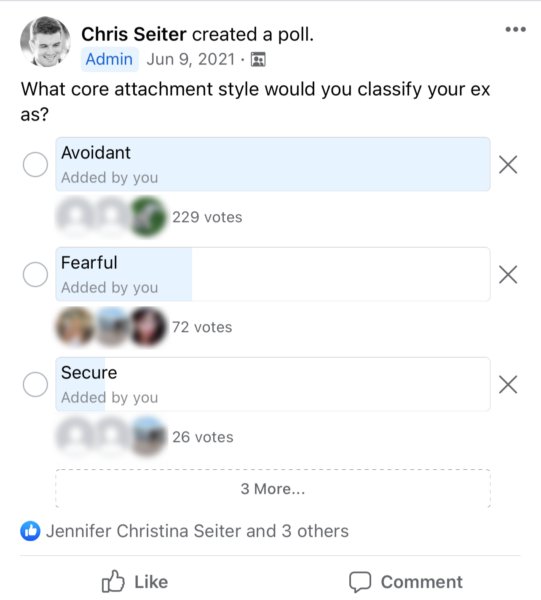
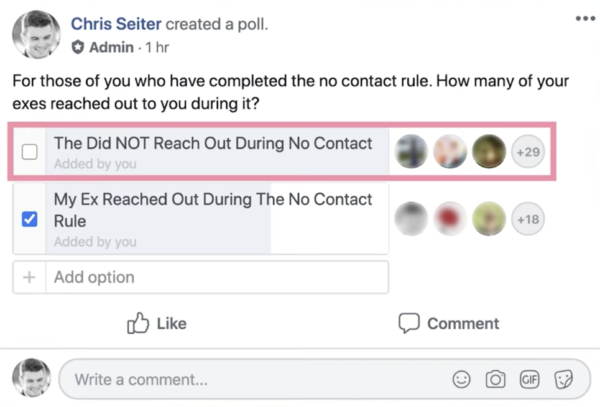
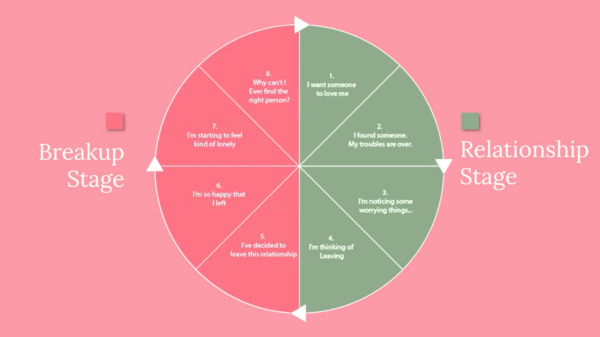
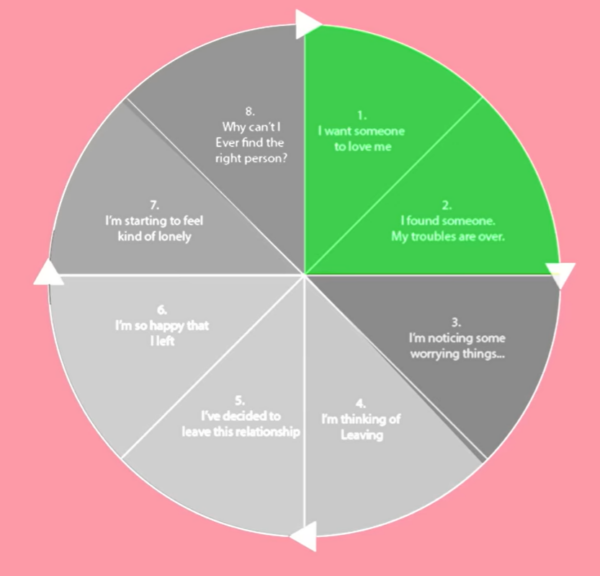
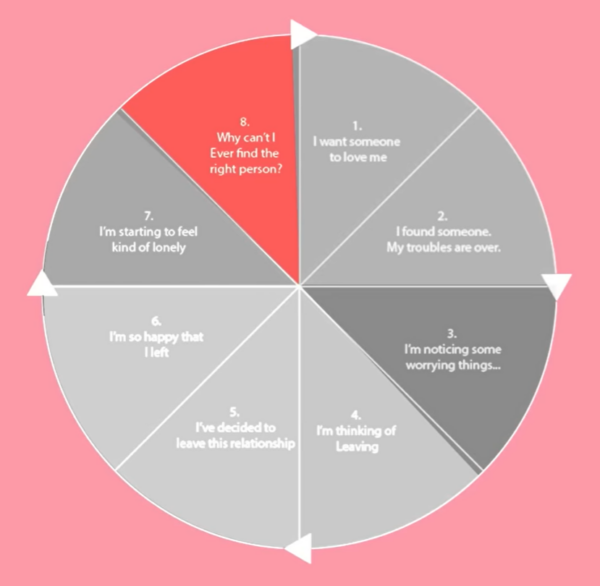
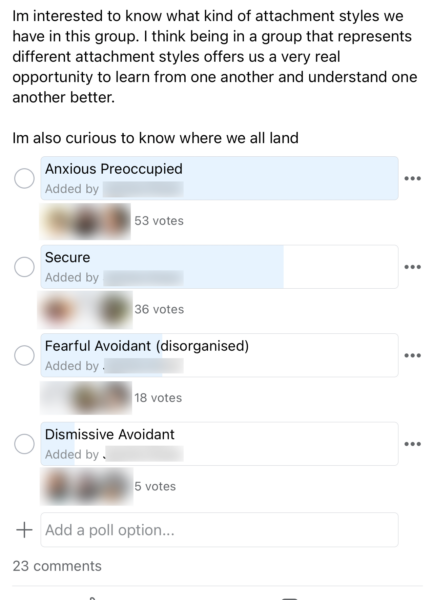
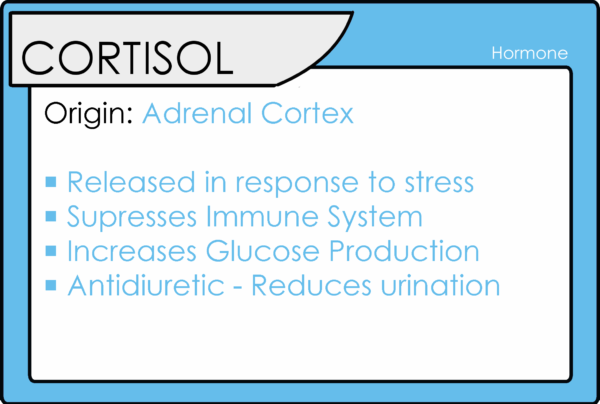
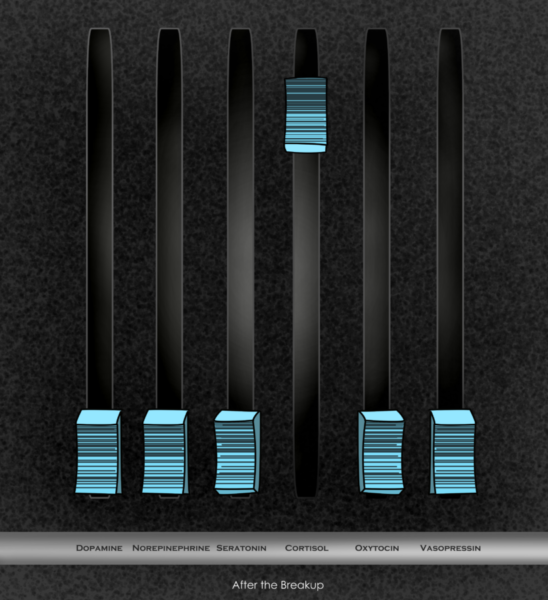
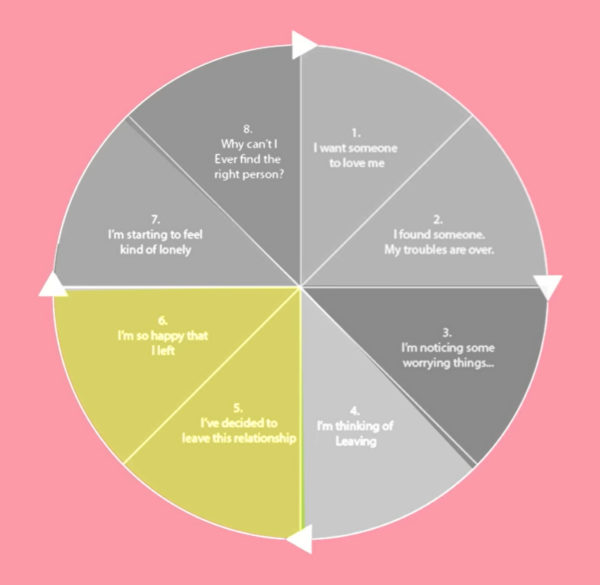
Wendy Lloyd
March 3, 2025 at 8:57 pm
I initiated contact with an ex, short term fling of 9 yrs ago, but had a strong connection of common ground..We e-mailed through Linkedin..and for 8 mths several e- mails a day on all matters, him driving it..l had a job to keep up but he told me..l was to think of him as a constant..Our fling back in 2015 was intence but ended messy and was compounded by the fact that he lives in NZ and time in uk where l am, each year..so distance..He rang me back in 2018, three yrs after our initial meeting..After a short while into our e-mailing, it began to foster the feelings l had for him and to the point where l told him..l wouldnt be his option if he wasnt making me his priority..As l told him l was probably going to push him away..but l would get an answer..l told him l was going to ‘walk away’ from e-mail..(l tried 3 times) l couldn’t let go!
One day l just blocked him..4 mths ago..lt took strength but l could no longer keep that position of pain…Nearly a month after l blocked..he turned up on another site..with a ” hello “…l accept that my feelings are unrecipricated now time has brought more clarity, but l miss his humour, his inteligence and worldy discussions and NZ where l also once lived…that we have in common…Should l reach out again…part of me says..l will put myself back in ‘that’ place again and would l be giving him the power to hold me again??